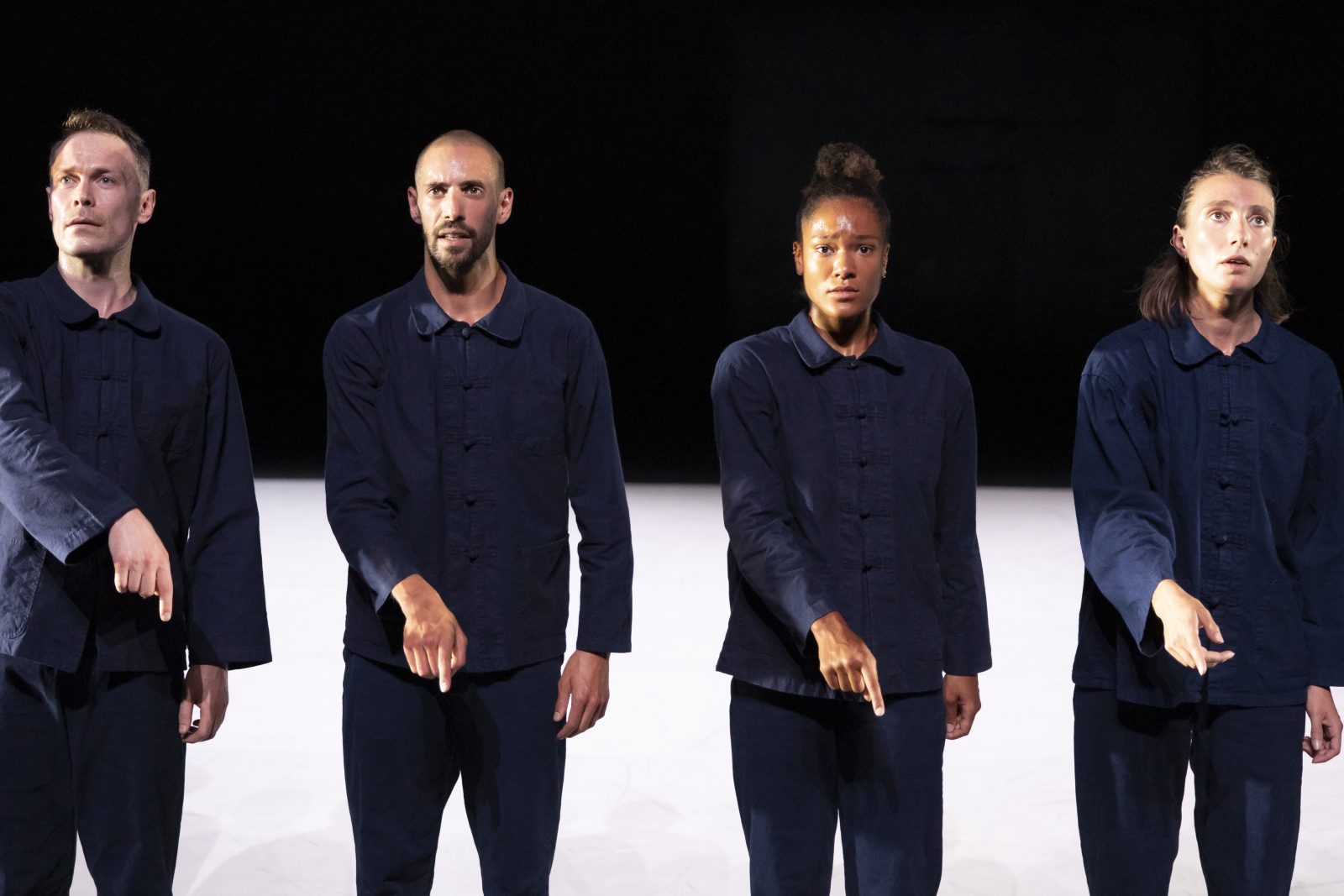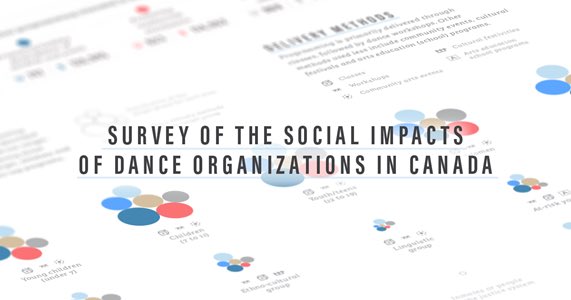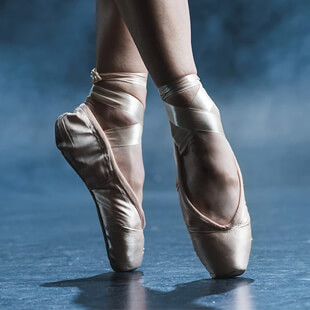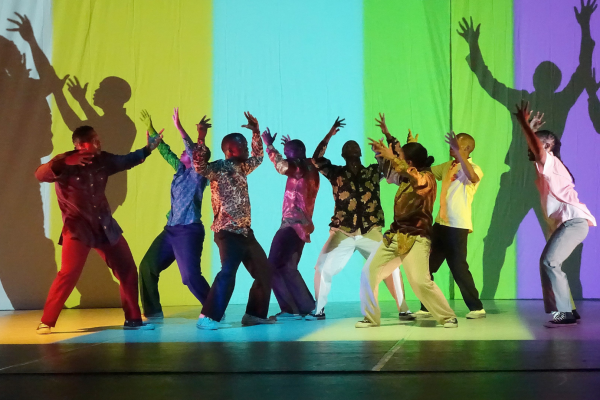Navy Blue played at Place des Arts’ Théâtre Maisonneuve as part of Festival TransAmériques in Montreal from May 30 to June 1.
Twelve souls emerge onto the vast, murky, blue-lit stage at Place des Arts’ Théâtre Maisonneuve, dotting Oona Doherty’s undefined world in her work Navy Blue. The dancers move in unison, cloaked in indigo outfits reminiscent of proles in George Orwell’s 1984, heads trembling and fists raised: a band of outsiders, devoid of identity in some isolated future. So far, so good.
I’d been told about Doherty’s rough-and-ready piece Hard to Be Soft: A Belfast Prayer, where she engaged with gender, identity and emotional truths, and her subsequent mercurial rise to fame, including her receipt of the Silver Lion Award at the Venice Biennale, so I couldn’t wait to see Navy Blue.
In a departure from her previous pieces, which were all solo works, Doherty doesn’t appear onstage; however, we hear her voice in a well-spoken recitation of a tongue-in-cheek text, co-written with Bush Moukarzel, with an emphasis on the “small insignificant thing… surrounded by darkness.” Case in point, world atrocities and demagogues are named, and later the cost of each item in the production, “this pale blue dot,” as she says, is listed.
Oppositional forces seem to shape the world she perceives, with music in the foreground. The first half features Sergei Rachmaninoff’s epic Piano Concerto No. 2 in C minor, op. 18. Gunshots puncture the romantic score, and one by one, the individuals fall, blue pools of light forming under their lifeless bodies. They cluster as a pack, regroup. A limb juts one way, then another. Friction is in the air.
For me, it recalls the tumult of the Troubles in Northern Ireland, yet even if it’s shocking to see, there’s a predictability to that kind of senseless violence, as each being is picked off, silenced. The work is not heavy-handed at all, but it lacks revealing nuances of human relationships and emotional struggle. In this liminal setting, I could only think that I wished I were seeing this in a much more intimate space, where I reckon I’d be hit by the cruelty of the proposition in a more resonant way.
After the concerto, in the second half, the soundtrack shifts to the omniscient synth-based sounds of DJ Jamie Smith, a.k.a. Jamie xx, and the performers are brought back to life. There’s a futuristic feel to this section, but there’s no joy, no optimism. The dancing in the final section is jumpy and flailing, and in the last moment, there is a coming together, a group hug of sorts.
Doherty is no bearer of hope, yet it’s inspiring to see how she is grappling with potentially complex sensibilities and notions of social insignificance and striving to come to terms with humanity’s moral indifference. Ultimately, and this is sad to say, “There is no there there,” to cite Gertrude Stein’s remark, which is a far more disconcerting conclusion.
Dance Media Group strengthens the dance sector through dialogue. Can you help us sustain national, accessible dance coverage? Your contribution supports writers, illustrators, photographers and dancers as they tell their own stories. Dance Media Group is a charitable non-profit organization publishing The Dance Current in print and online.

Tagged:





